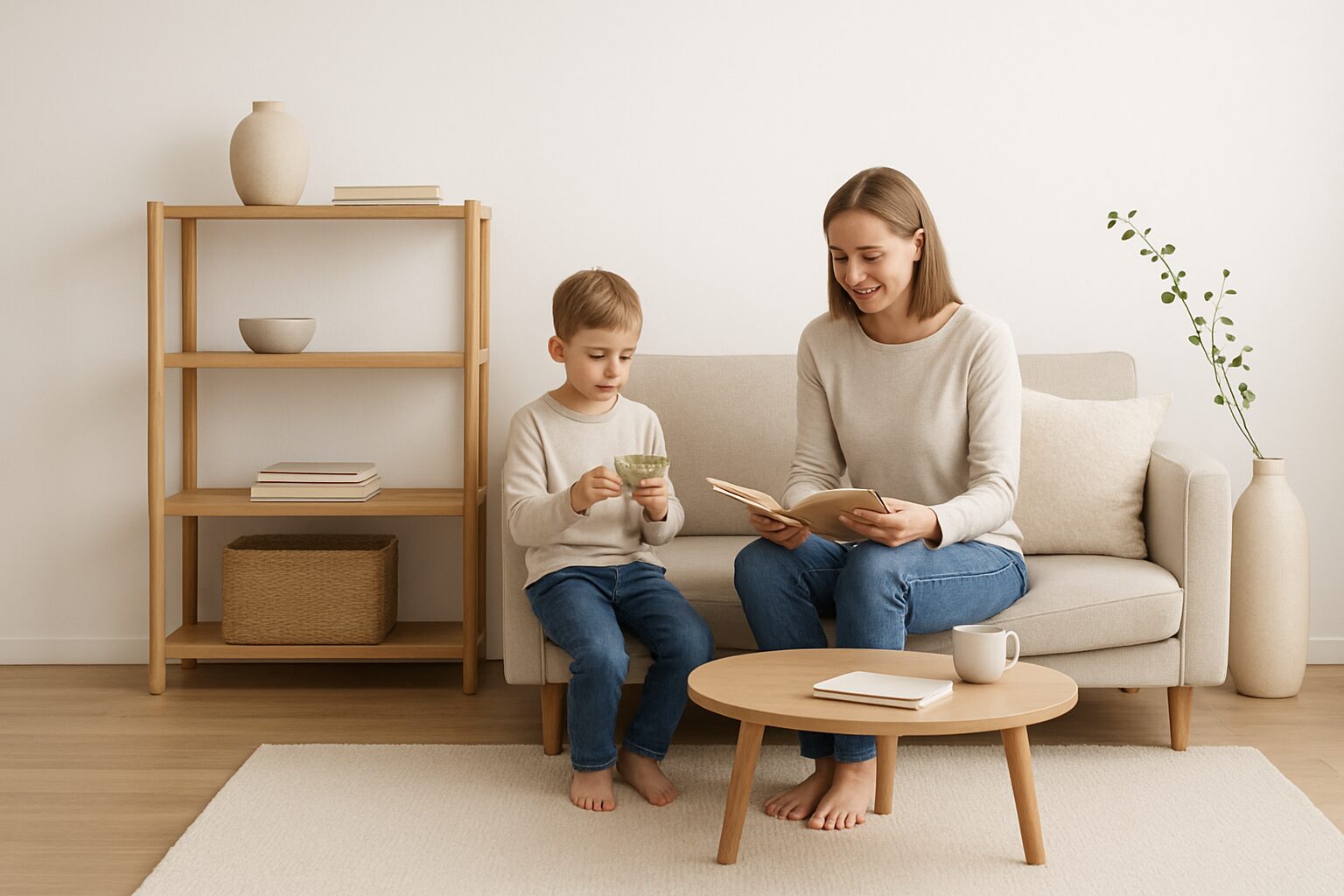In a world that constantly encourages us to buy more, minimalism offers a refreshing alternative. It’s not just a lifestyle trend—it’s a practical way to simplify your life, focus on what truly matters, and improve your financial health.
Minimalism is about owning less but living more intentionally. It’s about prioritizing experiences, relationships, and peace of mind over clutter and consumption. Beyond its emotional and mental benefits, minimalism also helps you save more money, reduce waste, and achieve long-term financial freedom.
In this guide, we’ll explore how minimalism can transform your finances, your mindset, and your overall quality of life.
What Is Minimalism?
Minimalism is a lifestyle that encourages living with less—less clutter, fewer distractions, and fewer unnecessary expenses. But it’s not about deprivation. It’s about keeping what truly adds value to your life.
Minimalism vs. Frugality
While both aim to save money, minimalism focuses on simplicity and intention, whereas frugality focuses on cost-cutting.
- A minimalist might buy one high-quality pair of shoes that lasts years.
- A frugal person might buy a cheaper pair just to save money.
The minimalist mindset is about intentional living—making conscious choices that align with your values rather than impulse or habit.
Valuing Experiences Over Possessions
Minimalists believe that happiness doesn’t come from owning more stuff but from meaningful experiences and relationships. Instead of chasing trends, they focus on long-term satisfaction and financial peace of mind.
The Financial Benefits of Minimalism
Minimalism can have a direct and measurable impact on your financial life. When you own less, you spend less—and the savings can be substantial over time.
How Owning Less Reduces Expenses
- Fewer impulse buys – You stop buying items you don’t need.
- Lower maintenance costs – Less stuff means fewer repairs and replacements.
- Reduced housing and storage costs – You might realize you don’t need as big a house or extra storage.
- More mindful spending – You think twice before every purchase.
Real-Life Example
A family who embraced minimalism saved around 30% of their monthly income by cutting down on unnecessary shopping, dining out, and home decor. Over a year, that’s a potential ₱120,000 in savings—money that can go toward investments or debt repayment.
Visual: How Minimalism Helps You Save More
| Spending Category | Before Minimalism | After Minimalism | Savings (%) |
|---|---|---|---|
| Shopping & Fashion | ₱15,000/month | ₱7,000/month | 53% |
| Home Decor & Upgrades | ₱8,000/month | ₱3,000/month | 62% |
| Dining & Entertainment | ₱10,000/month | ₱5,000/month | 50% |
| Total Monthly Savings | ₱33,000 | ₱15,000 | 55% |
Decluttering Your Life: The First Step to Saving More
Decluttering is often the first step toward living a minimalist life. It’s about evaluating what you own, removing what no longer serves you, and keeping what truly matters.
Step-by-Step Guide to Decluttering
- Start small – Begin with one drawer or room.
- Sort items – Keep, donate, sell, or recycle.
- Be honest – If you haven’t used it in a year, you probably don’t need it.
- Digitize – Scan papers, organize photos, and clear digital clutter.
Turn Clutter Into Cash
Sell unused items online or host a garage sale. Platforms like Facebook Marketplace or Carousell make it easy to earn money from items collecting dust.
Mindful Spending and Intentional Living
Minimalism helps you take control of your money by encouraging intentional spending.
Smarter Spending Habits
- Create a “buy later” list instead of purchasing immediately.
- Set a 24-hour rule before buying anything non-essential.
- Focus on quality items that last longer.
The “One-In, One-Out” Rule
For every new item you bring into your home, remove one old item. This simple rule helps maintain balance and prevents clutter from piling up again.
Quality Over Quantity
Choosing durable, well-made products often saves you more in the long run. For example, a ₱4,000 pair of shoes that lasts five years is a better investment than buying ₱1,000 pairs every year.
Minimalism Beyond Money: Emotional and Lifestyle Benefits
Minimalism is more than just a financial choice—it’s an emotional reset.
Reduced Stress and Decision Fatigue
Having fewer things simplifies your life. You spend less time cleaning, organizing, and deciding what to wear or buy.
More Time and Freedom
With fewer distractions, you can focus on experiences that bring joy—family time, travel, learning new skills.
Improved Mental Clarity
Cluttered spaces often lead to cluttered thoughts. By simplifying your surroundings, you create a peaceful environment that promotes focus and creativity.
Minimalism and Sustainable Living
Minimalism naturally supports sustainability. When you consume less, you reduce waste and carbon footprint.
The Eco-Friendly Side of Minimalism
- Less packaging waste
- Reduced demand for mass production
- Longer-lasting products mean less landfill waste
Aligning Finance with Sustainability
Minimalists often invest in sustainable brands or local businesses that prioritize ethical production. This approach not only supports the planet but also aligns with intentional financial decisions.
How to Start Living a Minimalist Life
Transitioning to a minimalist lifestyle doesn’t happen overnight. Here’s how to begin:
Step 1: Define Your “Why”
Ask yourself: Why do I want to live minimally? Is it for financial freedom, peace of mind, or sustainability?
Step 2: Set Goals
Start with realistic goals, such as decluttering one room a week or reducing monthly expenses by 20%.
Step 3: Track Your Progress
Use budgeting apps like YNAB, Mint, or Notion to track financial and lifestyle improvements.
Step 4: Learn and Stay Inspired
Recommended resources:
- The Minimalists (Documentary)
- Essentialism by Greg McKeown
- Goodbye, Things by Fumio Sasaki
Common Misconceptions About Minimalism
Myth 1: Minimalism Is About Owning Nothing
Minimalism isn’t about living with bare walls—it’s about owning only what adds value.
Myth 2: It’s Only for the Wealthy
Minimalism is for everyone, regardless of income. In fact, it often helps people get out of debt faster.
Myth 3: Minimalists Don’t Enjoy Life
Minimalists enjoy life more because they focus on meaningful experiences rather than material possessions.
FAQs About Minimalism and Money
- How can minimalism improve financial health?
It helps reduce unnecessary expenses, freeing up money for savings, investments, or debt repayment. - Is minimalism the same as being cheap?
No. Minimalism is about intentional living, not cutting corners. - Can families live a minimalist lifestyle?
Absolutely. Families can practice minimalism by setting boundaries for toys, clothes, and spending. - How do I stay consistent with minimalism?
Revisit your goals regularly and remind yourself why you started. - Does minimalism work for small apartments or big homes?
Yes. The principles apply to any space or lifestyle. - How do I handle sentimental clutter?
Keep what truly holds meaning and let go of duplicates or unused keepsakes. - What are the first steps to becoming a minimalist?
Start by decluttering and being mindful of new purchases. - Can minimalism help with debt reduction?
Yes. By cutting excess spending, you can redirect funds toward paying off debt. - What are the best minimalist budgeting methods?
Try the 50/30/20 rule or zero-based budgeting for simple financial management. - How do I convince my partner or kids to embrace minimalism?
Lead by example. Show them the benefits through actions rather than pressure.
Conclusion
Minimalism isn’t about sacrifice—it’s about freedom. When you own less, you gain more: more time, more peace, and more financial stability. By embracing minimalism, you simplify your life, reduce stress, and build a future rooted in clarity and purpose.
Start small, stay consistent, and focus on what truly adds value to your life.
Disclaimer
This article is for informational and educational purposes only. It does not constitute financial or lifestyle advice. Readers should adjust strategies according to their personal circumstances, goals, and comfort levels.



